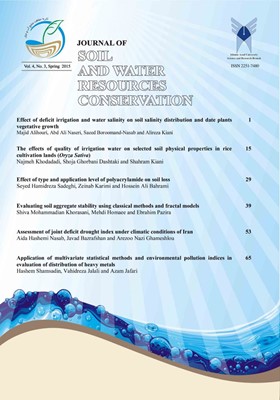Application of multivariate statistical methods and environmental pollution indices in evaluation of distribution of heavy metals
Subject Areas : Farm water management with the aim of improving irrigation management indicatorsHashem Shamsadin 1 , Vahidreza Jalali 2 * , Azam Jafari 3
1 - Former M.Sc. Student, Department of Soil Science, Faculty of Agriculture, Shahid Bahonar University of Kerman, Iran
2 - Assistant Professor, Department of Soil Science, Faculty of Agriculture, Shahid Bahonar University of Kerman, Iran
3 - Assistant Professor, Department of Soil Science, Faculty of Agriculture, Shahid Bahonar University of Kerman, Iran
Keywords: Environmental Indicators, Heavy Metals, multivariate statistical, Sarcheshmeh copper complexes,
Abstract :
Multivariate statistical techniques, i.e., correlation coefficient analysis, principal components analysis (PCA), and hierarchical cluster analysis (CA), were applied to the total concentrations of hazardous metals in soils around the Sarcheshmeh mine, that it is one of the largest Oligo-Miocene porphyry copper deposits in the world. For the study, 100 surface soil samples were collected around the mining and processing complex. The total concentration of heavy metals was measured by using four acid digestion and inductively coupled plasma (ICP-OES). Various indices including geo-accumulation index (Igeo) and enrichment factor (CF) were used for determining the contamination level of soil in the study area. Based on geo-accumulation index (Igeo), major and minor hazardous element in the region was Cd and Zn, respectively. Enrichment factor (CF) has revealed that the main soil pollutant was Cd element and the minimum soil pollutant in region was induced from Co. The results obtained from the application of multivariate techniques on the soil data set showed that there is positively correlation between the elements such as Pb, Zn, Cd, Cu, Co, Fe and Mn in the study area. Also, there was a strong relationship among these elements based on the PCA and CA classification.

